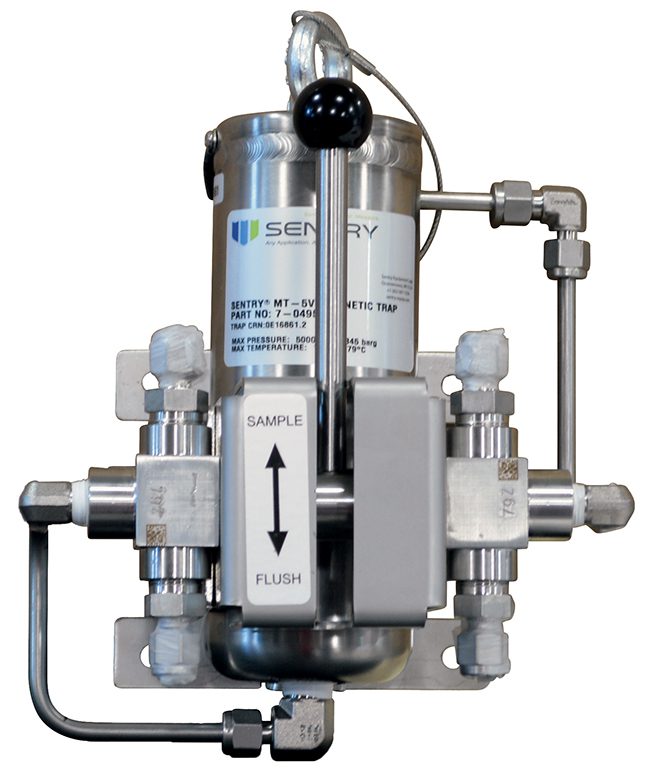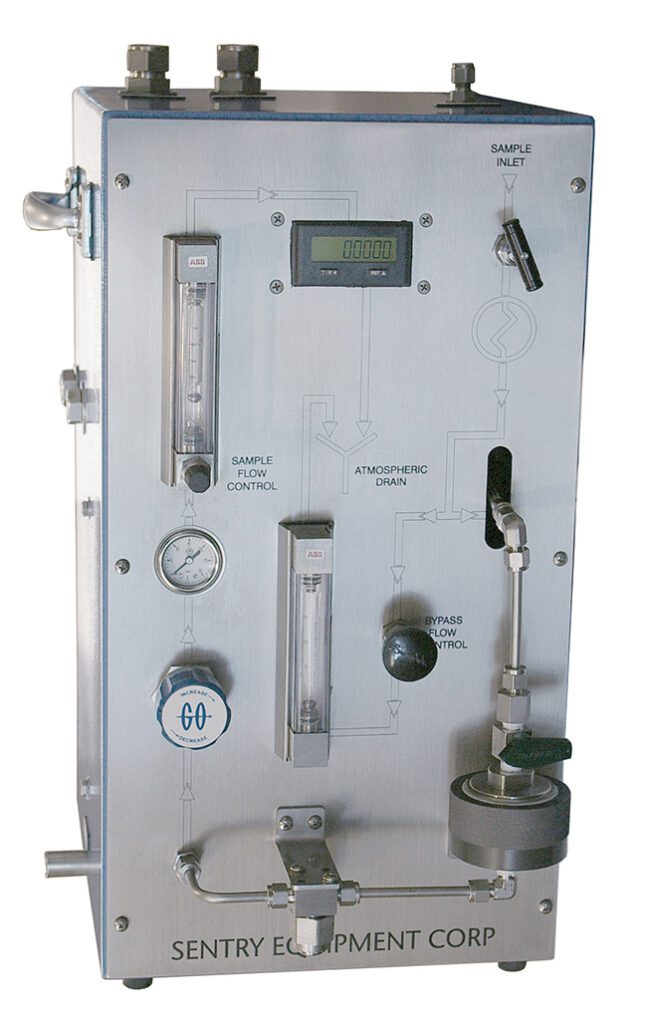Tips for Managing Steam and Water Analysis System Maintenance in Aging Plants
Proper steam and water analysis system (SWAS) maintenance is critical to the operation of any coal, nuclear, or combined cycle power plant, many of which are being forced to ask more of aging equipment. For plants looking to avoid total system replacement, there are many solutions available to extend the lifecycle and improve efficiency of aging equipment, aiding plant operators in their battle against Father Time.
Due to the critical role water plays in power generation, managing water chemistry is crucial to ensuring piping integrity and process efficiency. Foundational in water chemistry management is the maintenance of an effective steam and water analysis system (SWAS) that is properly and carefully monitored. However, that is an ideal reality that is often easier said than done.
The Big Picture
There’s no stopping the passage of time. Still, as plants age, routine maintenance is more important than ever—especially for plants where entire system replacement may not be an option. The practical life of a sample panel holds its reliability for up to 20 years when properly maintained, but the lifespans of some individual components are often far less. Analyzers and other electronic components tend to reach obsolescence in the seven- to 10-year range. Regardless, maintenance on individual instruments like analyzers should be conducted at least monthly to keep everything properly calibrated and running. Other individual components, like sample coolers and pressure regulators, are at increased risk of failure if plants are unable to conduct timely component maintenance and replacements when needed.
Further, as most plants continue to battle ever-decreasing employee numbers, dedicated maintenance of working equipment is not a priority. Unfortunately, workforce issues within the power sector are not expected to be alleviated any time soon. The U.S. Bureau of Labor Statistics estimates that overall employment of power plant operators, distributors, and dispatchers will decline 10% over the next decade, partly due to the number of anticipated coal-fired power plant closings in the near future. The state of the energy workforce is a significant factor in a power plant’s ability to dedicate experienced staff to carefully monitoring equipment.
The Problems
The most significant risk of an improperly maintained SWAS is that improper flows and poorly maintained analyzers can leave the plant essentially running blind. A malfunctioning SWAS leaves steam turbines more vulnerable to chemistry excursions, which can cause forced plant outages and loss of plant efficiency.
 |
|
1. Magnetic traps are an extremely popular, low-maintenance solution for managing corrosion product buildup. Courtesy: Sentry Equipment |
Most plant operators are already working with their hands tied; trying to keep up with everyday plant demands is often overwhelming enough for a depleted workforce. However, the most common SWAS performance issues stem from prolonged periods without proper maintenance, and the consequences of failing to prioritize equipment maintenance can be catastrophic.
Plant Cycling, Corrosion, and Erosion. Outside of regular corrosion due to age, commercial power plant operations frequently require cycling and varying plant loads for most plant design types. However, these cycling operations are something that many plants weren’t specifically designed for.
Cycling creates thermal and mechanical stresses that disrupt the protective layer on the boiler tubing and key components, gradually breaking down and eroding the equipment. Combined with the ongoing maintenance battle of aging equipment, these plants are left particularly vulnerable to the corrosion and erosion of their equipment.
Excessive Magnetite Buildup and Fouling. Cycling may also cause increased migration of iron species, namely magnetite and hematite, from plant piping. These particulates are likely to infiltrate the sampling system, which can cause irregular pressure drops, flow suppression, and equipment damage—stockpiling the number of downstream maintenance issues.
If not addressed, magnetite can wreak further havoc within a plant’s SWAS by plugging sample conditioning components and analyzers. When magnetite is excessive, operators need to physically remove the magnetite to protect the steam and water conditioning components and analyzers, and, ultimately, the plant components.
Without reliable online chemistry data, plant operators and management must rely on limited information to make maintenance decisions. For instance, failure to monitor saturated steam continuously may leave critical boiler operational issues, such as mechanical carryover, to proceed indefinitely and result in damage to downstream equipment. In addition, maintaining proper chemical feeds to boilers and condensate systems becomes very difficult in absence of online analyzer feedback. Chemical overfeeds (or underfeeds) can cause a host of steam system issues up to the rare, but memorable, complete loss of a boiler.
SWAS Solutions
However, cost-effective maintenance solutions are available for all plant operators, including those with a SWAS at the end of their lifecycle that do not have the budget for a complete replacement. For plants that suspect they may have magnetite deposits threatening SWAS performance, magnetic traps and high-pressure blowdown valves are exceptionally effective.
Magnetic Trap. As the name implies, the iron species magnetite is attracted to magnets. Magnetic traps use high-strength magnets to isolate and capture corrosion products, like magnetite particulates, from the sample stream to protect sample conditioning and analytical instruments from critical downtime and costly repairs.
Magnetic traps are highly recommended for any plant that cycles as they prevent plugged lines and preserve proper flows to downstream components. The magnetic trap is typically located upstream of the pressure control valve, where most particulate lodges. Implementation improves flow consistency for cycling plants and improves the reliability of downstream components, such as thermal shutoff devices for which magnetite may have intermittent effects. If improperly cleaned or maintained, they simply become “loaded,”—meaning the magnet can’t attract additional magnetite until the particulates are flushed out. To easily dispose of trapped magnetite from the line, magnetic traps are equipped with a flush handle that easily purges the trapped material.
Magnetic traps are commercially available for use in both low- and high-pressure applications, protecting both the sample conditioning equipment and the analyzers. These components are easily retrofitted into most existing SWASs.
High-Pressure Blowdown Valve (HPBV). Another way to manage particulate is high-pressure blowdown. From the point of extraction all the way through the panel, a high-pressure blowdown arrangement can purge any contaminants from the line to keep sample lines clear.
HPBVs are located between the sample line and a blowdown header that’s routed to a drain or tank arrangement prior to temperature or pressure reduction. Blowdown discharge must not be restricted as this can impart a backpressure in which cross-contamination with higher-pressure samples are backed up into lower-pressure sample lines. Since there’s no pressure reduction or sample flowmeter, purging velocity is not metered or controlled. While effective, retrofitting a high-pressure blowdown header to an existing panel is more involved than adding magnetic traps.
Getting an Expert Opinion
The first step should always be to contact a qualified vendor to assess a system’s status before replacing individual components or providing retrofitted parts to those elements that need the most assistance. Generally, operators can diagnose the nature of a SWAS issue, whether it be a flow issue or otherwise. Still, it can be difficult—and even dangerous—to pinpoint the problem’s cause. Contacting a qualified vendor, ideally, one like Sentry Equipment that specializes in sampling retrofitting, replacement, and sample panel and analyzer maintenance services, provides the opportunity to discover where a system is in its lifecycle and what solutions are available to prolong it.
Monitoring Corrosion in Its Many Forms
Equipment corrosion doesn’t have to be something that just happens. There are measures plants can take to monitor the integrity of their equipment without disrupting operations. In addition to online surrogate iron monitoring methods, American Society for Testing and Materials (ASTM) guidelines recommend the use of corrosion product samplers (Figure 2) for the collection and eventual quantification of corrosion products.
 |
|
2. Corrosion product samplers are another popular solution to help aging plants monitor their corrosion levels and improve process efficiency. Courtesy: Sentry Equipment |
These samplers collect particulate and ionic matter circulating in the secondary piping of nuclear power plants and condensate/feedwater systems of fossil-fueled plants. The Sentry CPS Sampler is a portable, standalone unit that collects sample material on filters that are later removed for laboratory analysis. The data from a comprehensive corrosion monitoring program can be utilized to assist plant chemists in optimizing their chemistry program including identifying component specific metal loss. This can be particularly useful in aging plants.
With so many external factors to battle, the time and energy needed to implement a comprehensive SWAS maintenance plan pales in comparison to the time and energy required to facilitate a complete system replacement caused by inadequate equipment care. When it comes to maintaining plant efficiency, operator safety, and a healthy bottom line, SWAS maintenance should be of premier concern.
—Jeff McKinney is regional manager for Utilities with Sentry Equipment.